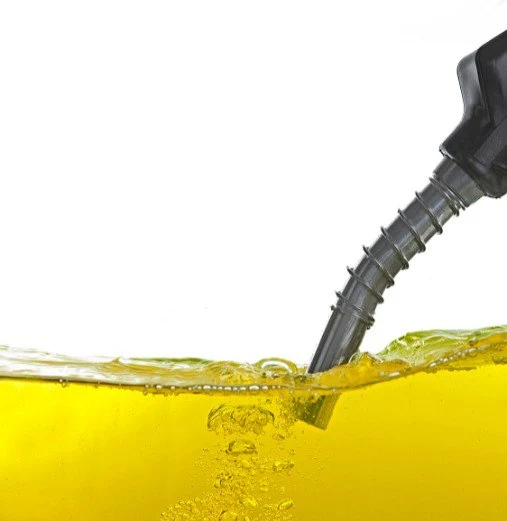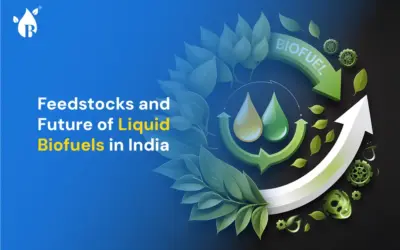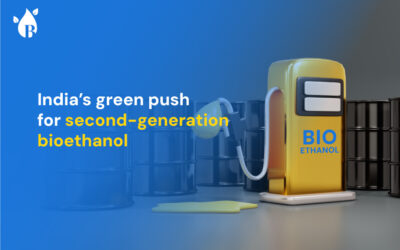
Yes, you read that right. The same oil you use to make your meals can also be used to power your vehicles. But don’t worry, we’re not going to suggest you pour a bottle of vegetable oil into your gas tank and hope for the best. There’s actually a whole process involved in turning that waste vegetable oil into a clean-burning fuel source.
So buckle up and get ready to learn about the fascinating process of turning vegetable oil into fuel. Let’s start.
What is biodiesel?
Biodiesel is a renewable fuel made from natural sources such as vegetable oil or animal fat. It’s a clean-burning fuel that emits fewer pollutants than traditional fossil fuels. Biodiesel is an excellent alternative to diesel fuel, and it’s readily available in most parts of the world.
Significance of Proper Briquette Size and Shape
The size and shape of biomass briquettes play a crucial role in ensuring optimal combustion. The combustion process involves the conversion of solid fuel into heat energy through the chemical reaction with oxygen. Now, we’ll look at why size and shape is essential.
Biodiesel Production Process
Biodiesel is produced through a chemical reaction called transesterification. The process involves mixing vegetable oil or animal fat with an alcohol, usually methanol, and a catalyst, such as sodium hydroxide or potassium hydroxide. The chemical reaction breaks down the vegetable oil or animal fat into methyl esters (biodiesel) and glycerol.
The transesterification reaction takes place in a reactor vessel, which is typically made of stainless steel. The reactor vessel is equipped with a heating and cooling system, a stirrer to mix the reactants, and a reflux condenser to remove any water that is produced during the reaction.
The first step in the process is to prepare animal fat oil. The oil or fat is filtered to remove any impurities, such as dirt or water. If the oil or fat is too thick, it may need to be preheated or treated with an acid to reduce its viscosity.
Once the oil or fat is prepared, it is mixed with methanol and a catalyst in the reactor vessel. The mixture is heated and stirred for several hours, until the reaction is complete. The glycerol that is produced during the reaction settles at the bottom of the reactor vessel, while the biodiesel floats on top.
The glycerol is then separated from the biodiesel using a centrifuge or settling tank. The glycerol can be used to make soap or other products, while the biodiesel is washed with water to remove any remaining impurities.
The final step in the process is to dry the biodiesel and add any necessary additives, such as antioxidants or detergents. The biodiesel is then ready to be used as fuel.
Biodiesel in India
In India, biodiesel is mainly produced from non-edible oil seeds, such as Jatropha, Karanja, and Mahua. The traction for the biodiesel needs in India is growing at a very fast pace. Let’s see why and how biodiesel is utilized.
- Transportation sector: Biodiesel is being used as a blend with traditional diesel in India. The Indian government has set a target of blending 5% biodiesel with diesel by 2030. Many Indian states have already implemented a 5% biodiesel blend in their public transport systems, such as buses and taxis. The use of biodiesel reduces the emission of harmful pollutants, such as carbon monoxide, nitrogen oxide, and particulate matter, and reduces the dependence on fossil fuels.
- Agriculture sector: Biodiesel is also being used in the agriculture sector in India. Farmers are using biodiesel-powered tractors and other agricultural machinery. This helps reduce the cost of diesel and increases the income of farmers who grow non-edible oil seeds.
- Power generation: Biodiesel is being used as a fuel in diesel generators to produce electricity in remote and off-grid areas. This helps reduce the dependence on fossil fuels and provides a reliable source of electricity to communities.
- Industrial sector: Biodiesel is also being used in the industrial sector, mainly as a fuel for boilers and furnaces. The use of biodiesel reduces the emission of harmful pollutants and helps industries meet their environmental and sustainability goals.
Overall, the use of biodiesel in India is growing rapidly, and the government is promoting the production and use of biodiesel through various policies and incentives.
Read this blog also: Stop Imports of Fuel Oil to Save Biodiesel
Conclusive Insights
By now, you would’ve understood that the world of vegetable oil-based biodiesel is truly a wonder to behold. From fryer to fuel tank, this renewable energy source is an innovative solution to our ever-growing energy needs.
So the next time you’re enjoying some tasty treats in the kitchen, just remember, that grease can do a lot more!
Also on a serious note, the benefits of using biodiesel over traditional fossil fuels are significant. Not only does it produce fewer harmful emissions, but it also reduces our reliance on finite resources. So let’s all do our part and consider making the switch to biodiesel with Buyofuel.
After all, if we can find a way to turn our love for french fries into a cleaner planet, we’re all for it! Aren’t we?



